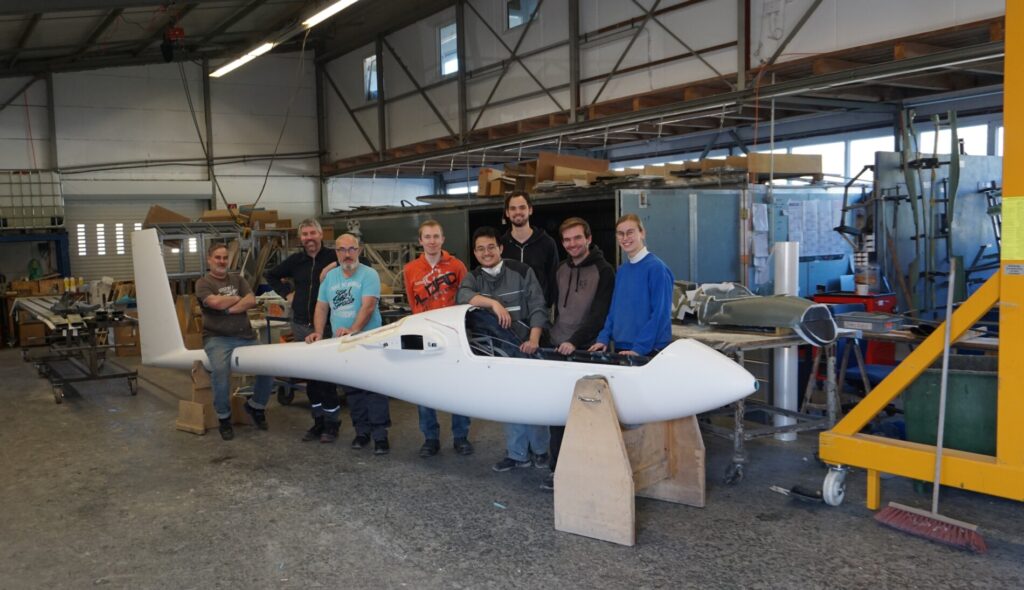
After three years of design work, the time had finally come: at the end of January, a decisive milestone on the way to the maiden flight was reached with the shell construction of the flying fuselage of the fs36 FlyByWire.
As already mentioned in connection with the introduction of the fs36 (https://akaflieg-stuttgart.de/projekte/fs36/), we decided to take the fuselage of the Ventus 3T Sport from Schempp-Hirth Flugzeugbau and adapt it according to our goals. Accordingly, the construction took place at Schempp-Hirth’s factory in Nabern/Kirchheim unter Teck (where we were already able to produce our mock-up in spring 2021, https://akaflieg-stuttgart.de/2021/04/12/ein-mock-up-von-der-fs36/) and we were allowed to use the associated moulds. Especially during the first two days, we were actively supported in inserting the fuselage by the employees, who were also always there to help us during the rest of the time and from whom we were able to learn many valuable tips. After that, the work on the installation parts began, which we, quite untypically for us students, started every morning punctually at seven o’clock.
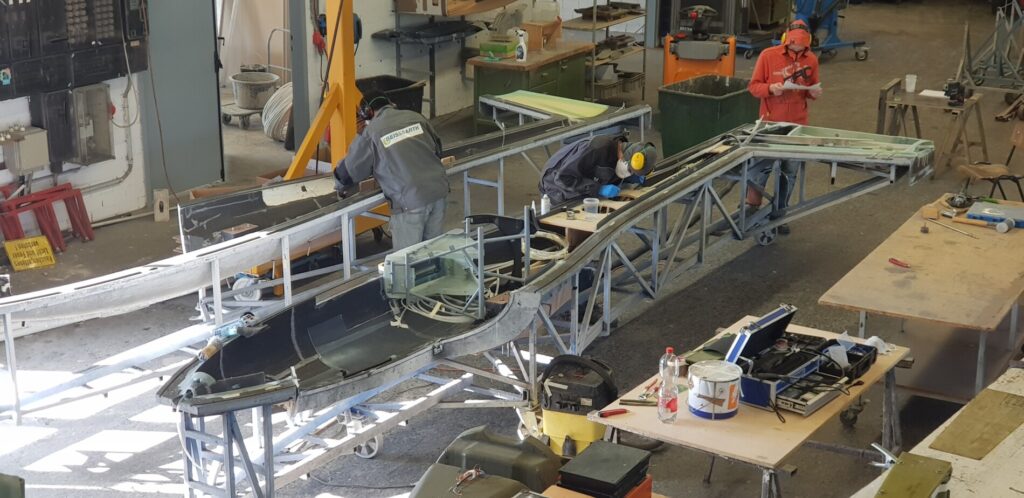
Serial fuselage production in the Nabern facility
By using the fuselage structure of the production model we were able to save work in the area of design and certification, which we were able to put into our special adaptations instead. These include a retractable tail gear, the option of a brake chute and aerodynamically adapted wing-body-fairings (WBF). We were able to adopt most of the fuselage structure consisting of carbon-fibre-reinforced-plastics (CFRP), a mix of CFRP and aramid-fibres for the forward fuselage section to improve crash protection. The vertical stabilizer is built from fibreglass to prevent electromagnetic shielding of the antenna.
Our tail gear extends further out of the fuselage than the Ventus wheel in order to provide a low ground angle of attack, improving control authority during a winching launch. It also causes the fuselage to experience increased loads and requires a larger internal storage volume. Therefore, the rear part of the fuselage has been locally reinforced, furthermore the size of the tail gear also meant that built-in parts in the rudder, such as the water tank ribs, the spar and the entire elevator control system had to be redesigned. CFRP control rods from the Schütze company were used which also gave us some weight reductions. In order to design the new structural parts of the rudder, we carried out comparative calculations and produced the necessary moulds on our CNC portal milling machine.
The brake chute may be necessary in order to comply with certain paragraphs of the building regulations. The required sink rate would probably not be accomplishable with the airbrakes alone, as the airbrakes are limited in size by our wing profile. In order for the fuselage to be able to withstand the forces generated by the chute, the fuselage tube must also be reinforced at the appropriate point.
To gain space in the cockpit we decided to extend the main landing gear electrically. The accommodation of the associated actuator and the fuselage-side control of the wing flap was prepared by adapting the fuselage framework. For this purpose we welded mounting points for both actuators and for a torsion shaft.
By far the most complex modification however was the adaptation of the WBF. Since we will be using our own wing with a self-developed profile and wing flap, we could not take over the original wing-fuselage transitions from series production. Therefore, we designed our own mould inserts and also manufactured them elaborately in the Akaflieg with our CNC-Protal milling machine. These were then mounted in the moulds of the Ventus 3T Sport. In addition, a frame had to be modified and several CFRP inserts had to be re-milled. This task was quite complex and accordingly the origin of a lot of work, which we will explain it further in a future article.
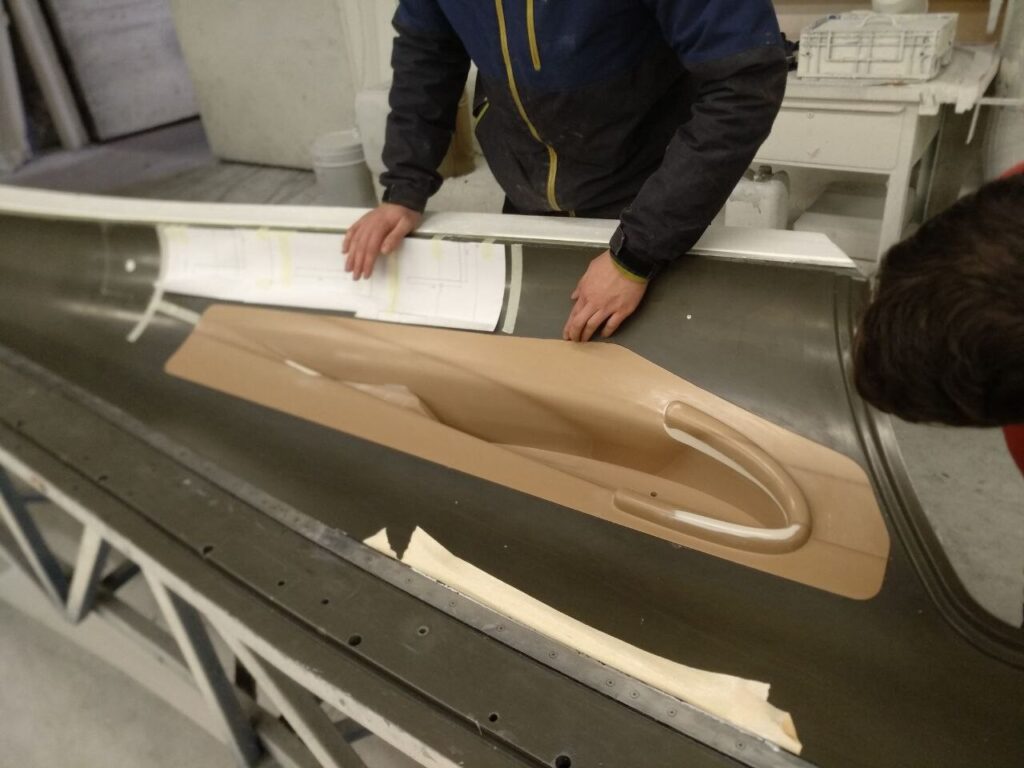
The newly fitted WBF-mould-inserts
After a total of three weeks of hard work, the two halves of the fuselage were finally connected and demoulded just in time for Valentine’s Day. After the transfer in the trailer, it now stands in our workshop for further work, where it can be admired daily by all those present.
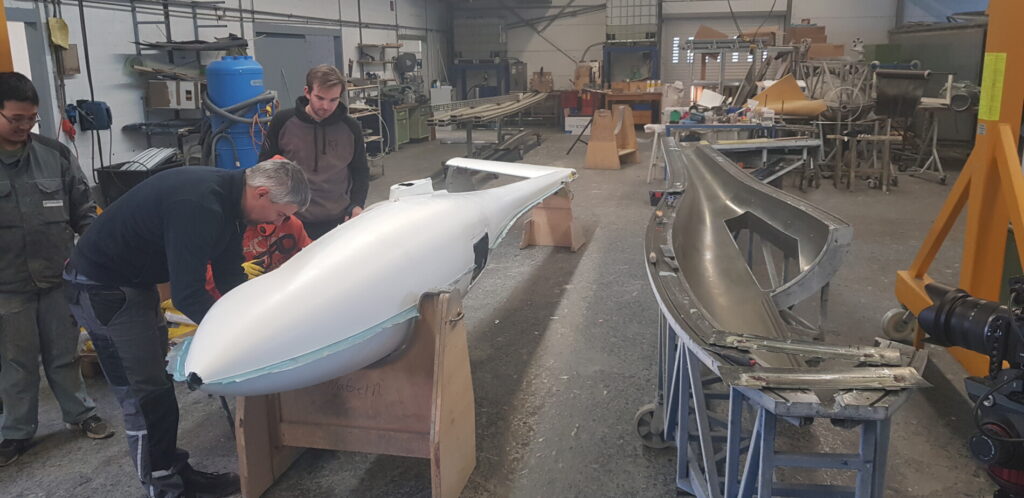
The fuselage directly out of the mould
We would like to take this opportunity to thank our friends at Schempp-Hirth, without whom the hull construction would not have been possible. We always felt very comfortable and were actively supported whenever help was needed or we had questions. We would also like to thank our wide spectrum of supporters, without whose donations of materials this project would have been a lot harder. Last but not least, we would also like to thank the German Federal Ministry for Economic Affairs and Climate Protection, which provided us with the funds to pay for the things we could not obtain through donations as part of an air research project.
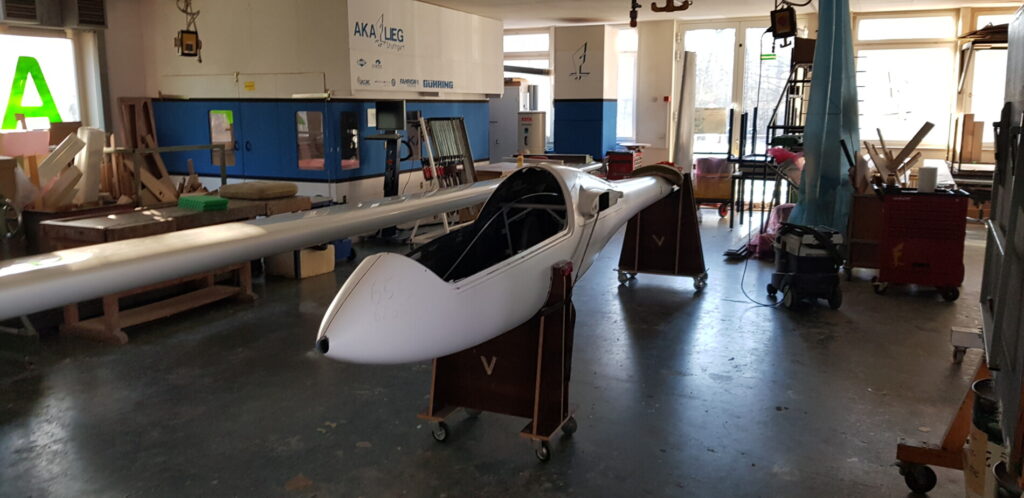
The fuselage in its current state in our workshop

